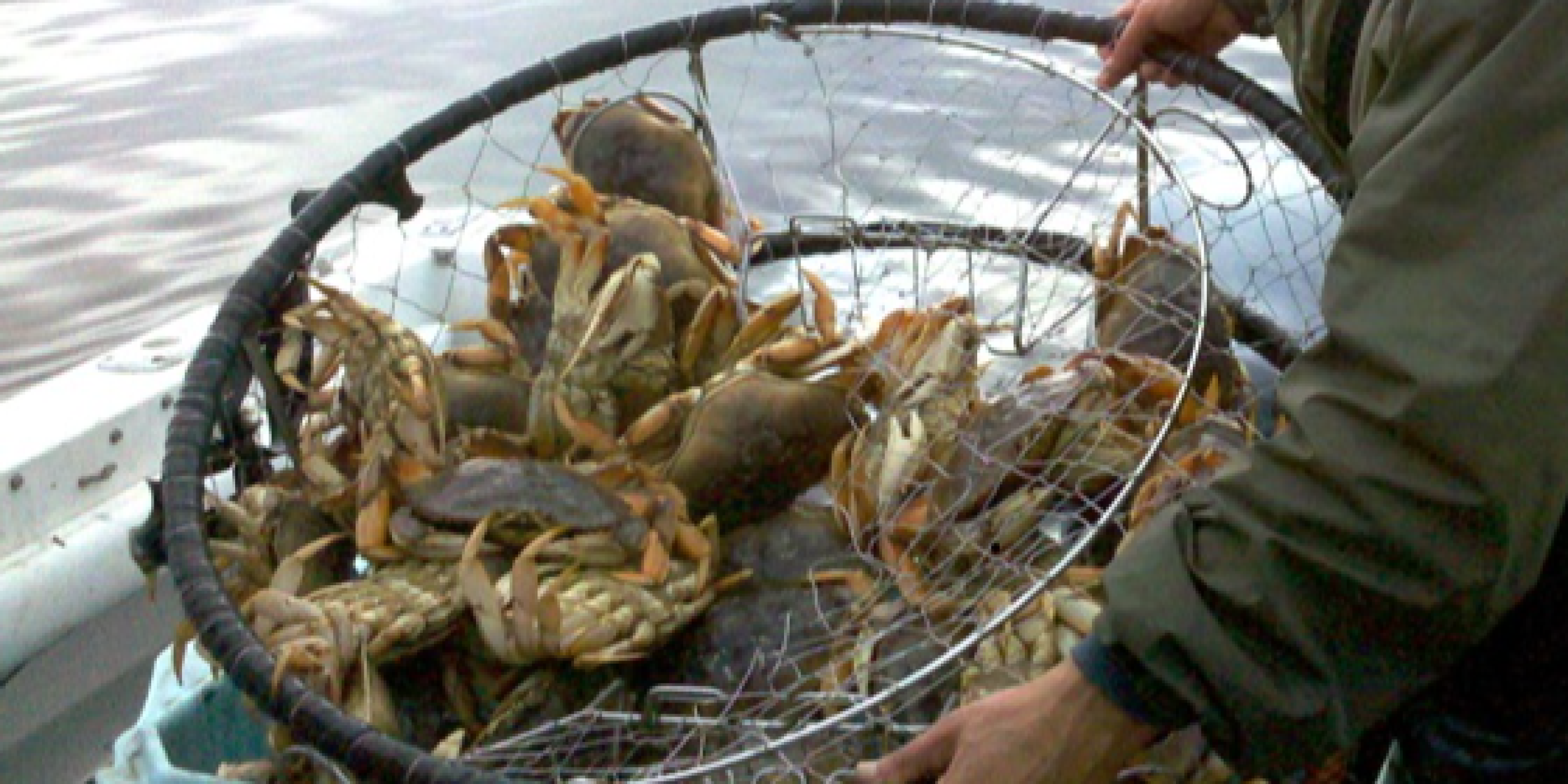Located off the coast of Oregon and Washington state, the commercial Dungeness crab fishery is one of the most valuable fisheries in the region. With economic values ranging from $77 to $216 million US dollars per year for the 2007/08 to 2019/20 crab seasons, the Dungeness crab fishery industry is one of the largest on the West Coast. Additionally, this fishery is extremely important to the West Coast fishing and tribal communities of Washington and Oregon state. In recent years, seasonal ocean forecasts have begun to inform decision-making and management of marine resources, including species-specific applications for tuna, hake, and lobster. With this region experiencing environmental variability and change, it’s important to have operational ocean forecasts to improve predictions of Dungeness crab catch rates.
Dungeness crab landings per crab season for Oregon and Washington state fisheries. Fishing typically begins late in one calendar year and continues into the following year, so for example, the 2007–2008 fishery is labeled 2007/08.
In a new ICES Journal of Marine Science article, authors Emily Norton, Isaac Kaplan, Samantha Siedlecki, Albert Hermann, Simone Alin, Jan Newton, Kelly Corbett, Daniel Ayres, Ervin Schumacker, Nicholas Bond, Kate Richerson, Michael Alexander, and state and tribal fisheries managers, develop a model for Dungeness crab catch per unit effort (CPUE) to help inform dynamic management decisions in Oregon and Washington.
Using seasonal ocean forecasts from J-SCOPE to develop statistical catch rate models for Dungeness crab, the authors also investigated the relative importance of ocean conditions, including the effect of static, dynamic, and historical (i.e. lagged) conditions, on adult crab catch rates. The model’s skill was then tested before operationalizing forecasts for dynamic management applications.
It was found that spatiotemporal forecasts of crab CPUE displayed moderate skill when fishing behavior—i.e. fishing location, date, and soak time—was known, but skill declined sharply in true forecast mode, without knowledge of actual fishing behavior. The authors note that model skill relied heavily on fishing behavior, which varies interannually, highlighting the need for advanced fishing behavior modeling to reduce uncertainty. Additionally, inclusion of dynamic and lagged ocean conditions improved model skill compared to simpler models, and the best model captured intraseasonal trends and interannual variability in catch rates, and spatial catch patterns.
Observed (A) and forecast (B) CPUE climatologies for 2007/08–2015/16 crab seasons. Deeper green colors indicate higher CPUE yields. Percent model bias (C) was calculated by subtracting the observed from the forecast climatology and then normalizing by the observed catch. Orange indicates that the forecast is biased high (overprediction), while purple indicates that the forecast is biased low (underprediction); white indicates little or no model bias. Gray cells have small sample sizes (strings) so those cells have been obscured in the observations and bias figures.
“This was a unique chance for our research team to sit down with state and tribal crab fishery managers and understand the decisions that they make throughout the year,” said Dr. Isaac Kaplan, co-author and Research Fishery Biologist at Northwest Fisheries Science Center. “Each month, they are juggling decisions that depend on ocean conditions, including bottom oxygen and harmful algal blooms, as well as their expectations of crab quality and catch rates. The research puzzle was to figure out how the JSCOPE seasonal ocean forecasts can inform these decisions, and where and when those forecasts are skillful. It’s the kind of adaptive, forward-looking fishery management that we’ll need at the federal, state and tribal levels in this changing climate.”
The relationships between catch rates and ocean conditions may help explain environmental influences of catch variability. Forecast products were co-designed with managers to meet their needs for key decision points. The results also illustrate a seasonal forecasting approach for management of other highly productive, but also dynamic, invertebrates that increasingly contribute to global fisheries yield.
“The results of this work really highlight the importance of ocean conditions on the inter annual variability of catch for this important fishery, and in particular the role of oxygen levels. These conditions are predictable on various timescales with localized tools like J-SCOPE, and can provide resource managers and coastal communities prognostic information on seasonal to inter annual timescales to build resiliency in the face of changing climate,” said Dr. Samantha Siedlecki, co-author and Oceanographer at University of Connecticut.
Read the full study here.
Funding for this project was provided by the NOAA Climate Program Office, MAPP program



